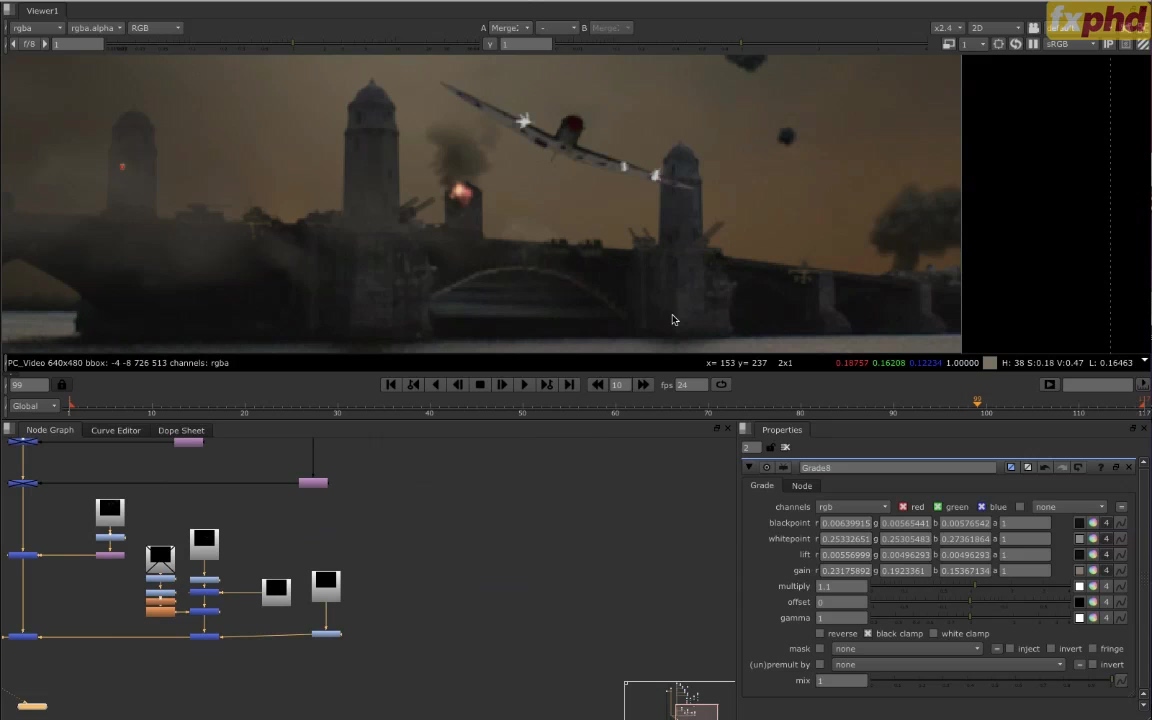NUK214 – Nuke and the VFX Pipeline
Now I’m watching NUK214 – and it’s much more interesting, and many cool points and workflow tricks can be taken on a pencil.
It’s told by ZERO VFX production guys, and is more close to real-life practice.
The first thing to note is workflow folder structure – they have well organized it by client, by project (year & proj#) and then images, io, references, and source work files.
The first roto class was awesome and quick. Mostly I liked the complexity of scenes (although it can always be more complex). Helicopter wire clean-up was a bit more boring, I was waiting to see explosion&heli mattes creation, but they just imported them. City aerial shot cleanup was more interesting, although I would like to do it in another way (nothing mentioned about ground plane), and also see how they deal with car reflections in buildings that are left 😉
The cool thing I noted is a Precomp node shared path in it – they use it to parallel the studio work – so one person can do a quick mockup of a roto, save it as .nk on shared drive, and another one can start doing clean-ups, importing the roto NK with a Precomp, then reloading it along the way it’s done by another guy.
The bluescreen part was awesome, showing additive keying principles with IBK, tweaking & stuff.
Photography modeling looked great as a preview, but was pretty boring to watch, although some key image-modelling & projection techniques were shown.
Then there was a channel overview (basics mostly – how to deal with layers & channels inside a node, how to merge them, etc).
Followed by render-passes breakdown & compiling (on a somewhat too simple example). But that should finally cover the “show me how to compile render passes in Nuke!” questions once and for all – who wanted to learn this – must watch this.
And the course ended with a bridge shot transformed to WW2 chronicles video – with airplanes, gunfires, etc. Was somewhat boring mostly, but many important techniques were shown, such as:
– rendering the panning camera shot to stabilized plane (for doing one-frame roto for the whole thing)
– and what was most interesting – using the STMap node with rendered UV channels for adding gunfires onto a rendered plane (without tracking it). You can also replace textures with that, or draw on them to add decals, etc.
Well, anyways, the course was much more interesting to watch than previous NUK210, although some places were a good insomnia pill too (especially when watching in bed :-)).
